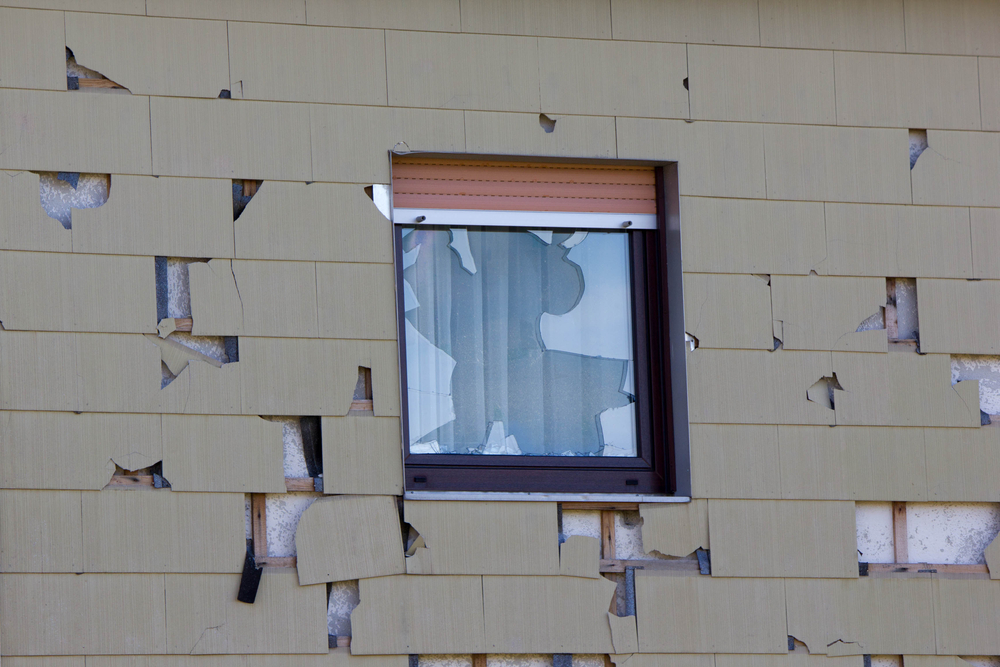July 14, 2022 | Risk Mitigation
Understanding Hail Risks for Your Property
Hail can be one of the most destructive weather incidents to your property. Although hailstorms can occur anywhere in the world, they are most common in the United States. In 2019, over 7.1 million properties were damaged by hail with losses reaching $13 Billion. Hailstorms typically occur between February and July and are some of the most difficult weather conditions to predict.

What is hail?
Hail is a solid form of precipitation that forms typically during thunderstorms when raindrops freeze into balls of ice. Hail can range in size from a pea to a baseball and can travel up to 100 mph, making it extremely damaging to cars, windows, roofs and more.
Who is at risk?
While hail can cause damage anywhere, properties most at risk are those located in the Midwest and the Great Plains. States with the highest risk of damage from hailstorms include Kansas, Nebraska, South Dakota, Texas and Colorado.
Unnoticed Roof Damage
It could take property owners months or longer to notice roof damage from hail. Hail damage on a roof can occur in two ways. It can land with enough force to crack or break shingles; or it can damage the flashing, which protects areas where a roof is most vulnerable. Once hail hits and damages a property’s exterior, water can find its way into cracks on your shingles and begin to damage the property’s interior.
Properties with low-sloped or flat roofs may experience more damage from hail than properties with steep-sloped roofs. If your property is in an area that sees hailstorms regularly, it would be wise to invest in an impact-resistant roof. Prolong the life of any roof by having it regularly inspected and repairing any signs of wear and tear. Work with your insurance company to evaluate hail exposure so you can protect the property in case of an event. Talk with your agent so they can answer any questions and help ensure that your property is covered should an unexpected weather-related event occur.
Windows without Protection
Ensuring your windows are thoughtfully designed is another way you can protect against hail damage to your property. While most windows don’t completely shatter during severe weather conditions, hail damage to windows can be just as severe as roof damage. In some cases, the windows may need to be replaced. Look for cracked panes as your most obvious sign of damage. If a window has been damaged, there may be leaks. Invest in shutters as a secondary step to avoid extensive damage when a storm blows through. Shutters could prevent broken glass from blowing into the property.
Blocked Gutters and Downspouts
Gutters and downspouts play an important role in keeping your property in good condition. After a storm, it’s important to inspect them for any damage. Clogged gutters can cause water to backup and seep into your home, causing serious damage. Damaged gutters and downspouts can also lead to foundation damage. Simply put, a gutter is like a cup below your roof line, used to catch any water falling off the roof. The downspout or the tube leading from your gutter to the ground carries that water away from the foundation of your property so it doesn’t collect there and cause foundational damage.
Weak Siding Material
While you can’t control hailstorms, you can control the siding material on your property. Similar to roof damage, siding can take a nasty hit, especially if the material is not durable enough to withstand physical damage. Investing early on in weather-resistant siding will help to mitigate any future weather damage. Weak siding will carry many risks for your property including being more likely to buckle and dent, allowing water to leak into your property walls causing mold, mildew and rot.
Understanding these risks is imperative to protecting your property from devastating hail damage.
